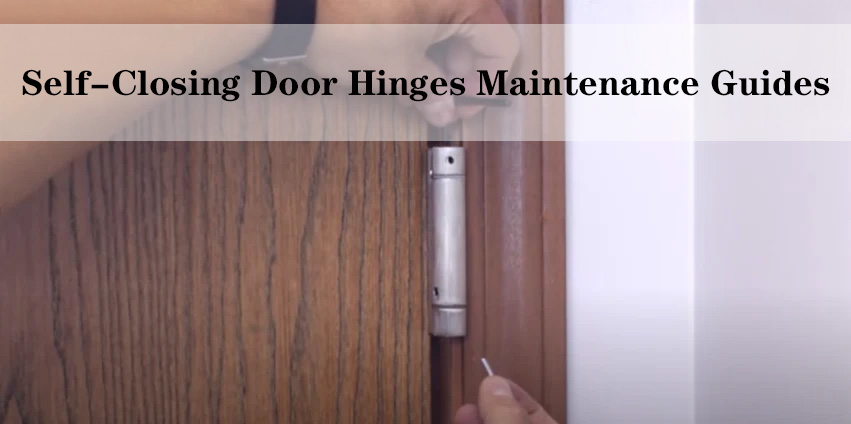Lift-off hinges, celebrated for their practicality and user-friendly nature, have become increasingly popular in various settings, ranging from cozy homes to bustling commercial environments. Their unique appeal lies in their ability to simplify what was once a cumbersome task – removing doors. Traditionally, taking a door off its hinges was a task requiring tools and a fair bit of elbow grease. However, lift-off hinges have revolutionized this process, making it seamless and tool-free.
This feature is particularly advantageous in spaces where doors need to be removed frequently. For instance, in a residential setting, you might find these hinges incredibly useful in rooms that require regular deep cleaning or redecoration. They are also ideal for spaces where large furniture or appliances need to be moved in and out occasionally, eliminating the need to maneuver around fixed doors. In commercial spaces, such as offices or restaurants, lift-off hinges facilitate easy access for maintenance work or cleaning, significantly reducing downtime and effort.
The beauty of lift-off hinges also lies in their inclusivity. They are designed keeping in mind both the seasoned DIY enthusiast and the absolute beginner. This guide aims to demystify the installation process, breaking it down into simple, manageable steps that anyone can follow with confidence.
Understanding Lift-Off Hinges
To fully appreciate the ingenuity of lift-off hinges, a deeper understanding of their design and functionality is essential. At their core, lift-off hinges are a marvel of simple engineering. They consist of two interlocking components: the male leaf and the female leaf. The male leaf, which is typically attached to the door, is characterized by a pin at its end. The female leaf, on the other hand, attaches to the door frame and has a hole that perfectly accommodates the pin of the male leaf.
This design is what makes lift-off hinges so user-friendly. When these two components are aligned and connected, they form a secure and functional hinge, allowing the door to swing open and closed as any regular hinge would. However, the magic happens when you need to remove the door. Instead of reaching for a screwdriver or a hammer, all you need to do is lift the door. The male leaf, with its pin, smoothly slides out of the female leaf, freeing the door from its frame effortlessly.
This mechanism not only makes the removal process easier but also ensures that reattaching the door is just as straightforward. The alignment is intuitive, and the door can be securely put back in place without any struggle or need for additional tools.
By understanding the basic mechanics of lift-off hinges, you can appreciate their design and approach the installation process with a clearer perspective. In the following sections, we’ll guide you through each step of installing these hinges, ensuring you can enjoy their benefits in your own space with minimal fuss.
Tools and Materials Needed

Lift-off hinges (ensure you have the right size and weight capacity)
Screwdriver or power drill
Screws (usually provided with the hinges)
Pencil or marker
Tape measure
Level
Step 1: Choose the Correct Hinges
When selecting lift-off hinges, there are several key factors to consider to ensure the hinges not only fit your door but also perform optimally. The most important considerations include:
Weight Capacity: Lift-off hinges come with different weight ratings. It’s crucial to choose a hinge that can support the weight of your door. Using hinges that aren’t rated for your door’s weight can lead to sagging or even hinge failure.
Door Opening Direction: Determine the direction your door will open – this will dictate whether you need left-handed or right-handed lift-off hinges. To figure this out, stand on the side of the door where it swings away from you. If the hinges are on your right, you need right-handed hinges, and if they’re on your left, you need left-handed hinges.
Size and Fit: The size of the hinge should correspond to the size of your door. A larger, heavier door will require larger hinges for proper support. Also, consider the hinge’s leaf width and length to ensure it fits the door and frame appropriately.
Material and Finish: Lift-off hinges are available in various materials like brass, steel, and stainless steel, each offering different levels of strength and aesthetic appeal. The finish should also complement your door and the room’s overall decor.
Type of Pin: Some lift-off hinges come with a non-removable pin for added security, which is especially useful for exterior doors. Consider this feature based on your security needs.
Step 2: Mark the Hinge Placement
Accurate marking is essential for a successful installation. Here are more detailed instructions:
Measure from the Top and Bottom: For a standard door, measure approximately 7 inches down from the top of the door and 11 inches up from the bottom. These positions can vary depending on the door size and weight, so adjust accordingly.
Mark the Frame and Door: Use a pencil or marker to clearly mark the hinge positions on both the door and the door frame. Ensure that these marks are precisely aligned, as even a small misalignment can affect the door’s function.
Double-Check with a Level: After marking, use a level to ensure that your marks are perfectly horizontal. This ensures that when the door is hung, it will be properly aligned and won’t swing open or closed on its own.
Consider the Gap: Remember to account for the gap between the door and the frame. Typically, a gap of about 1/8 inch around the door is ideal for smooth operation.
Step 3: Attach the Hinges to the Door
Follow these steps for a secure and straight attachment:
Align the Hinge: Position the male leaf of the hinge (the part with the pin) on the door, aligning it with your markings. Ensure that it is perfectly straight.
Secure with Screws: Use the screws provided with the hinges. Start by screwing in the middle screw to hold the hinge in place, then add the remaining screws. If using a power drill, be careful not to over-tighten and strip the screws.
Check for Level: Once the hinge is attached, use a level to check that it’s perfectly horizontal. An unlevel hinge can cause the door to hang improperly.
Repeat for Each Hinge: Attach each hinge carefully, ensuring they are all aligned with your markings and level. Consistency is key for a balanced door.
Step 4: Attach the Hinges to the Door Frame
Attaching the female leaf of the hinge to the door frame is a delicate process that requires precision. Begin by aligning the female leaf (the part with the hole) with the markings you previously made on the door frame. It’s crucial to ensure that the hinges are positioned correctly, as even a slight misalignment can affect the door’s function.
Once you have the hinge aligned, use a screwdriver or a power drill to attach the hinge to the frame. Start with one screw to hold the hinge in place, then check the alignment again before fully securing it with the remaining screws. Be careful not to over-tighten the screws, as this can strip the wood and weaken the hinge’s hold.
After securing the hinge, take a moment to double-check that the two parts of the hinges (male and female) align perfectly when the door is closed. This is a good time to use a level to ensure that the hinges are perfectly horizontal. Adjust as necessary before moving on to the next step.
Step 5: Hang the Door

Hanging the door is a critical step that might require an extra pair of hands. Carefully lift the door and align the male part of the hinge (attached to the door) with the female part on the door frame. The key here is to be gentle and precise. If the door is heavy, having someone help you can prevent accidental damage to the hinges or the door.
Once you have the hinges aligned, gently lower the door, guiding the male part into the female part. You should feel the hinges interlock as the door settles into place. If the door doesn’t fit easily, don’t force it. Instead, lift it off, check the alignment, and try again.
Step 6: Test the Door
Testing the door is crucial to ensure that your installation was successful. Gently open and close the door several times to observe its movement. The door should swing smoothly without any resistance or scraping. Pay attention to how the door sits when closed; it should be flush with the frame and latch correctly if applicable.
If you notice the door sticking or not aligning properly, it could be a sign of misalignment in the hinges. In this case, you may need to adjust the placement of either the male or female part of the hinge. Remember, small adjustments can make a big difference in how the door functions.
Step 7: Fine-Tuning
Fine-tuning is often necessary for a flawless installation. If the door isn’t closing properly, or if there’s a visible gap at the top or bottom, it’s time to adjust the placement of the hinges. This might involve slightly loosening the screws and shifting the position of the hinge, either up or down, or side to side.
If you find that the door is hanging unevenly, it may be necessary to adjust only one hinge. Loosen the screws of the problematic hinge and reposition it slightly. Tighten the screws and test the door again.
In some cases, the issue might be with the door itself, and not the hinges. If the door is warped or the frame is not square, you may face ongoing alignment issues. In such instances, it might be necessary to consult with a carpentry expert or consider replacing the door or frame.
By carefully following these steps and making adjustments as needed, you can ensure that your door not only looks great but functions perfectly, providing easy access and functionality in your space.
Conclusion
Installing lift-off hinges is a straightforward process that can significantly enhance the functionality of any door. By following these steps, you can ensure a successful installation, making your doors more versatile and convenient for everyday use.
Remember, taking your time to measure and align everything correctly is key to a smooth, hassle-free installation. With this guide, you’re well on your way to becoming a lift-off hinge installation expert!























